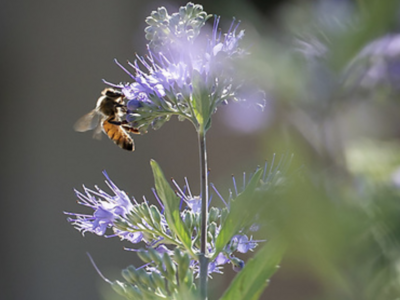
Restoration Ecology in Practice: Notre Dame Students Learn About Land Management From Landscape Services & Holy Cross Congregation
During the fall semester, faculty member in the Department of Biological Sciences, Ryan Sensenig, instructed a course, Restoration Ecology. The course was a mix of both undergraduate and graduate students who were assigned projects to develop land restoration plans at two locations: a 20-acre site owned by the Congregation of Holy Cross (undergraduates) and establishing a pollinator prairie space at Jordan Hall of Science (graduates). Student work in the course was twofold; they first steeped themselves in ecological theory, history, and methods, and then gained invaluable experience by working with the actual stakeholders of the spaces to develop restoration projects.
What is Restoration Ecology?
Restoration ecology is the scientific study and practice of repairing disturbed ecosystems through human intervention. It aims to recreate, initiate, or accelerate the recovery of an ecosystem that has been disturbed. Disturbances are environmental changes that alter ecosystem structure and function. Common disturbances can include invasive species, logging, damming rivers, intense grazing, hurricanes, floods, and fires. Ecological restoration activities may be designed to replicate a pre-disturbance ecosystem or to create a new, beneficial ecosystem where it had not previously occurred.
Congregation of Holy Cross Land

While students were becoming acclimated to the theories and methodologies of restoration ecology, undergraduates were invited to embark on multiple site visits to explore the Holy Cross Congregation’s parcel of land. Once farmland for feeding members of the Congregation and later a recreational field, the land is now battling Callery (a.k.a. Bradford) pear trees. These trees produce showy white blooms every spring, but they wreak havoc on the local ecosystem. They are incredibly invasive, and can quickly take over an entire area of land, choking out the competing native species. This can reduce biodiversity in the region, which can produce a ripple effect across our greater interconnected ecosystem in Michiana. The Holy Cross Congregation has been working with Landscape Services to carry out an active restoration plan for the space, successfully removing pear trees through meticulous methods. Still, the species persists in some areas of the land while they continue to restore the space.
During the site visits, students analyzed the current conditions of the land to determine factors that would need to be addressed in their own restoration ideas for the class project, such as soil types, drainage, topography, and environmental stressors.
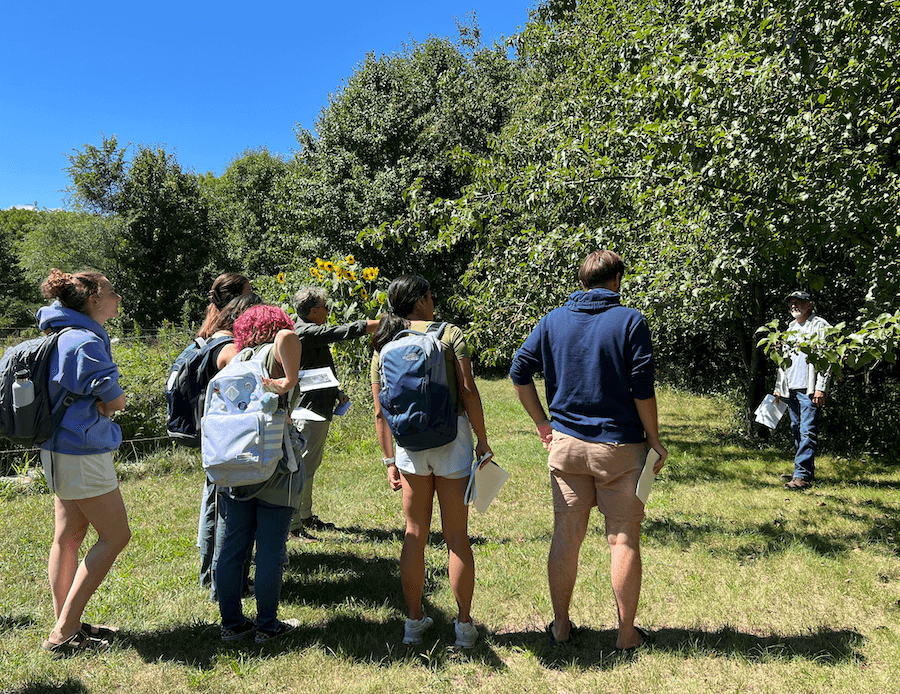
Undergraduate Project Outcomes
Findings
Student research confirmed that the invasive Callery pear trees have been greatly impacting the natural diversity of the land. Though the graphic (below) appears to have various existing conditions at first glance, the pear trees have been steadily integrating themselves into the landscape. Other ecological stressors identified include bush honeysuckle, tree of heaven, and reed canary grasses.

Proposed Land Solutions
In step with the University’s sustainability values, students outlined three restoration goals: improve biodiversity, increase carbon sequestration, and develop outreach and engagement opportunities. By planting native species and removing invasives alongside an ongoing environmental management plan, students proposed that these efforts would increase biodiversity and improve carbon sequestration, as some of the native species were chosen for their ability to store carbon. Specifically, a model was drafted with the historical landscape of Indiana in mind: a mix of oak savanna, prairie grassland, and walnut forests. This varied landscape style takes on significant carbon sequestration in addition to unique opportunities for creating natural habitats where beneficial native species can thrive.
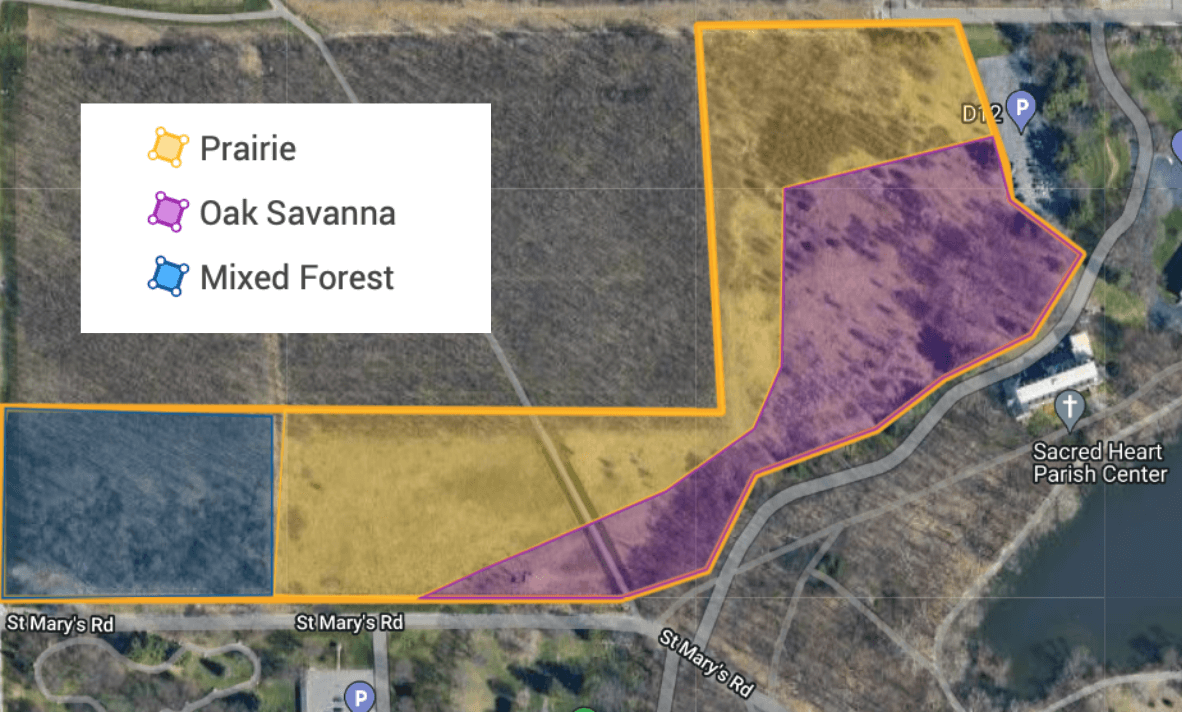
Continued Maintenance, Education, and Engagement
Successful ecological restoration cannot continue on varied vegetation alone—it must be coupled with continued maintenance and education in the communities that surround the remediated space. With this in mind, students recommended that informative signage be put up around the land to educate pedestrians, as these spaces are often diamonds in the rough until they mature. The undergraduates also proposed collaborative events like public blessings and nature walks be organized to raise awareness and appreciation of the land. To maintain the space going forward, they recommended that future classes could be responsible for annual biodiversity studies, to continue education on and monitoring of the space.
Pollinator Garden and Prairie Grassland at Jordan Hall of Science
While the undergraduate students were developing restoration plans for the Holy Cross Congregation land, solo graduate student, Max Scheel, a South Bend native, was creating recommendations for a pollinator prairie space and monarch waystation outside of Jordan Hall of Science. This space currently consists of mowed turfgrass primarily. Max’s proposal sought to create a more ecologically beneficial space that improves aesthetics, offers educational opportunities for faculty and students, and reduces maintenance labor for Landscape Services. Once matured, these landscapes can host a plethora of flora and pollinators, with the occasional need for controlled burns and weeding.
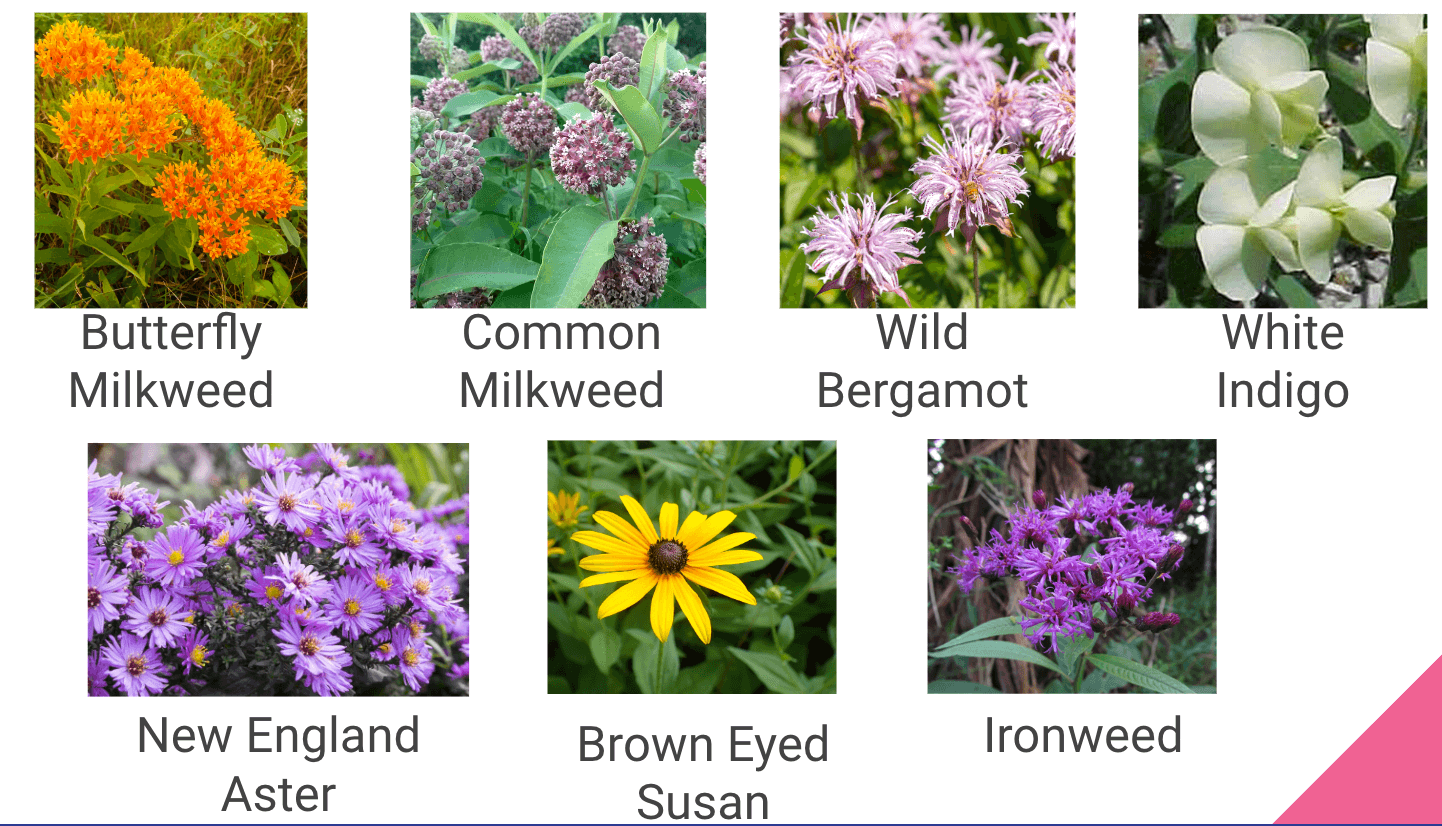
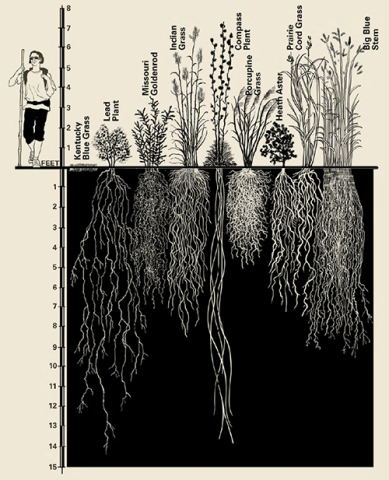
Native species such as bluestem grass and milkweed boast the ability to sequester carbon via deep root systems, and the reduced need to mow prairie spaces provides an added benefit for carbon reduction strategies. The plant species in Max’s recommended seed mix also increase the biodiversity of fauna and can become a pollinator safe haven, particularly for butterflies and bees—insects that greatly benefit human wellbeing.
Education and Engagement
Akin to the undergraduate project, Max recommended this space could be a research site for students and faculty to utilize for continued education and class participation. Alongside the student education element, community outreach and engagement were recommended in similar fashion to the Holy Cross site. Informative signage and land-focused events for the remediated parcel would bolster awareness and understanding of the space, and an initial volunteer-led seeding event was favored to build initial excitement.
A Lasting Impact
While the course was primarily educational in its application, students have been impacted by its teachings, and may carry these learnings into future practice. Undergraduate Anna Wang says,
“Restoration Ecology with Professor Sensenig was an eye-opening class that allowed me to explore ecological theories in practice. The class offered many field trips and immersive experiences into what restoration projects look like, especially on Notre Dame's campus. From this class, I was able to gain a first-hand understanding of how our human actions shape the environment, and, in turn, how nature directly influences our lives. I have gained an awareness of these dual human and environmental interactions in my daily life and am able to better appreciate the efforts ecologists put into creating restoration sites that serve both human communities and the environment.”
Max Scheel also completed the course with positive impressions of its teachings, reporting that,
"Restoration is important because, as humans, we must recognize the damage that we have done to our landscapes, and the ability that we have to mend our relationship with the land which surrounds us. Nature is all around us, and so we must be stewards of the land which we occupy… Dr. Sensenig exemplifies what being a restoration ecologist is all about. He balances the history of the land, the needs of stakeholders, and the conclusions of recent scientific studies to develop restoration projects that serve many beneficial purposes."
Intersections of Education and Caring for Our Common Home
This course and its outcomes are a testament to Notre Dame’s values. We are a University whose mission is committed to teaching and research, service, and community. As a Catholic institution, we are called to care for our common home, driven by Catholic Social Tradition and highlighted within Pope Francis’ encyclical Laudato Si’. The restoration ecology course is an outstanding example of how we can utilize education to be a powerful driver for the common good while building community, understanding, and practice being good stewards of the land.
Do you know an individual or a team who should be highlighted for their sustainability work? Submit a nomination for them here! Their story may be shared on our monthly Green Ambassador newsletter.
Originally published by at green.nd.edu on February 09, 2024.